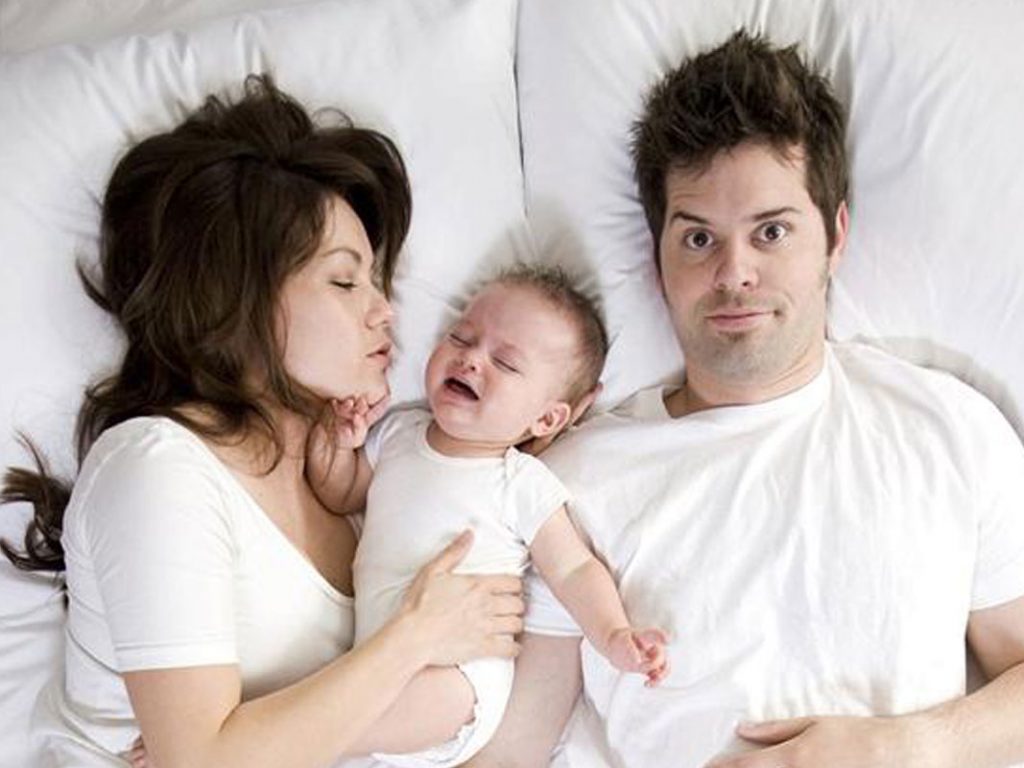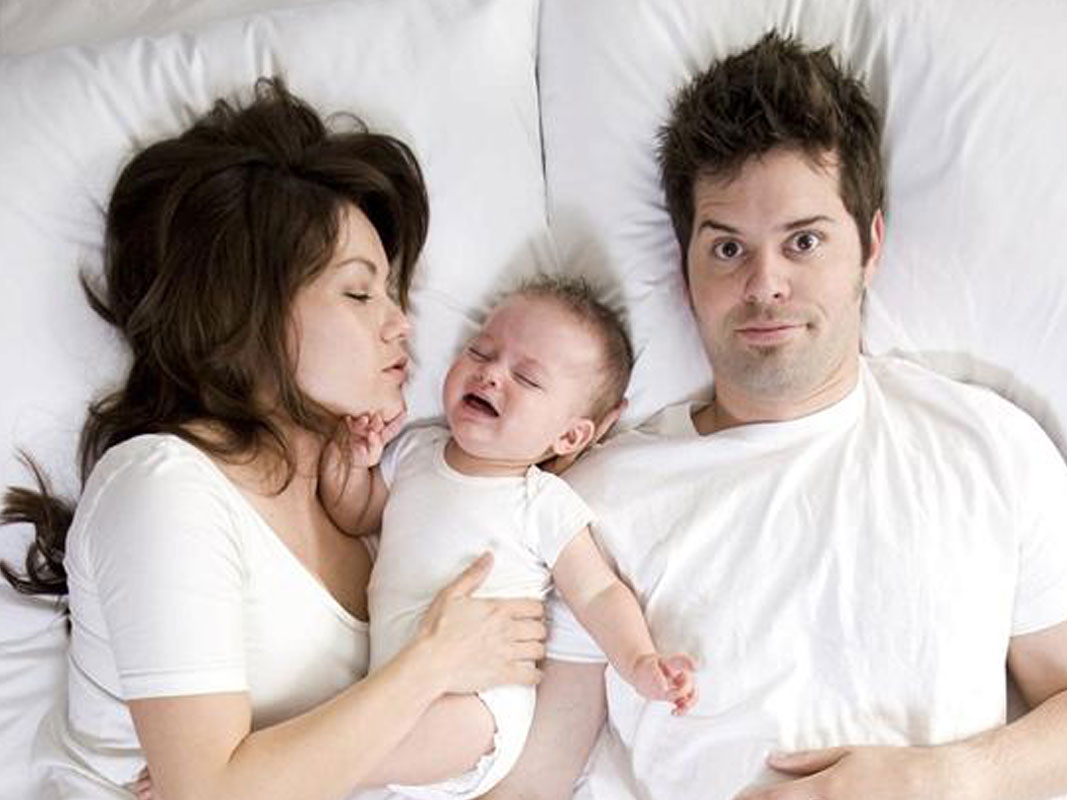One study says young babies should sleep in their own rooms.
If your baby is still sleeping in your bedroom after 6 months you should know why is is not such a good idea.

Getting the right kind and enough rest for babies and parents is important for later years.
How old should babies be when they start sleeping alone? Though the most recent safe sleep guidelines suggest that parents share a room with their little ones until they’re at least 6 months old, a new study finds that might not be the best thing for either baby or the rest of the family.Last October, the American Academy of Pediatrics (AAP) released updated recommendations suggesting that parents share a room but not a bed with their babies for at least the first six months of life and ideally a year to reduce risk of Sudden Infant Death Syndrome (SIDS). But a new study, published this month in the AAP’s journal Pediatrics, suggests that room-sharing may result in some considerable downsides for babies — including shorter length of sleep and unsafe sleep practices.
What the study looked at
Researchers from Penn State University used data from the “Intervention Nurses Start Infants Growing on Healthy Trajectories” (or INSIGHT) study, an obesity prevention trial that took place between January 2012 and March 2014.
In all, 230 new moms who were not sharing a bed with their infants completed a questionnaire when their babies reached 4, 9, 12 and 30 months old. Moms were asked to describe where their babies slept on a typical night, along with their little ones’ habits — sleep duration, night wakings (and how parents responded to them), night feedings, bedtime routines and infant sleep behaviors.
The babies were then separated into three groups: Those who slept in their own rooms before they turned 4 months old (62 percent of all babies), those who had their own rooms between 4 and 9 months (27 percent), and those who were room-sharers until at least 9 months of age (11 percent). The moms’ responses about sleep location and behaviors were compared across these groups.
What the study found
When they were 4 months old, all babies studied slept the same amount of time throughout the night, regardless of where they slept. But those who were in a separate room snoozed for longer periods of time — 46 more minutes more over the longest stretch than those who shared a room with their parents. Room-sharers also woke slightly more often during the night to feed (1.1 vs. 1.4 times), were twice as likely to be fed back to sleep, were less likely to have a sleep routine, and were less likely to be put down to bed by 8 p.m. than babies who were sleeping on their own.
At 9 months of age, babies who were sleeping on their own before they were 4 months old slept 40 minutes longer than babies who were still sharing a room with their parents, and 26 minutes longer than those who began sleeping in their own rooms between 4 and 9 months. Night wakings, night feedings and the odds of being fed back to sleep did not differ between the groups, but babies who shared a room were more likely to be put to bed after 8 p.m.
By 30 months of age, babies who had transitioned to their own rooms at the earliest age were sleeping more than 45 minutes longer than those who were still room-sharing at 9 months old.
Babies who continued to share a room with their moms were also four times more likely to share the bed, too — a risk factor for SIDS — when they were 4 and 9 months old than babies who snoozed independently. The 4-month-old room-sharers were also more likely to have a blanket, pillow, sleep positioner or other object in bed with them, an additional risk factor for SIDS, than babies who slept independently.
Although the most recent AAP policy recommends room-sharing for the full first year of life, the authors note that most SIDS cases occur between months 1 and 4, with 90 percent of all SIDS deaths occurring before the age of 6 months. Many doctors, they say, still recommend that parents start putting their babies to sleep in their own separate nurseries sometime around 6 months of age to “promote healthy and sustainable sleep patterns before the onset of separation anxiety later in the first year.”
The authors conclude that “the findings raise questions about the well-intentioned AAP recommendation that room-sharing should ideally occur for all infants until their first birthday…The suggestion that parents wait to move the infant out of their bedrooms until the end of the first year, when separation anxiety is normative and increasing, is likely to result in frustrated parents and unhappy infants. It also conflicts with other data that room-sharing is associated with more sleep disruption for mothers.”
What the AAP’s accompanying editorial said
At the same time that Pediatrics published this study, they also printed an accompanying editorial by Rachel Moon, M.D., lead author of the AAP’s 2016 safe sleep recommendations, and Fern R. Hauck. M.D., a member of the AAP Task Force on SIDS — much of which challenges the study’s conclusions and reaffirms the AAP’s latest sleep policy.
The two authors note that in this latest study, while babies who slept in their own rooms were snoozing for longer stretches at 4 months old, all babies — regardless of where they slept — were sleeping for a mean of at least 7 hours at a stretch a night. Considering the mean sleep length for babies ages 0 to 5 months old is 5.7 hours at a time, 7 hours is “well within the normal sleep range for this age,” they write.
They also say that it may not even be desirable for infants to sleep for longer stretches, since one of the theories on why some babies are more affected by SIDS is that there may be a physiological reason they’re less likely to wake up if something is obstructing their airways. They also suggest that the parents whose babies were sleeping for longer stretches may have been putting their babies to sleep on their stomachs — which is known to help babies sleep more soundly but is a big no-no since it’s definitely known to increase SIDS risk.
The authors emphasize that babies who room-share are more likely to breastfeed — and breastfed babies are more likely to wake up during the night (they need to feed more frequently, and they poop more often than formula-fed babies). But breastfeeding is also a known protective factor against SIDS.
They conclude that the AAP’s recommendation to room-share without bed-sharing, which is based on other studies finding that doing so may also reduce the risk of SIDS, is still the way to go for new parents.
What this means for parents
As these papers show, there’s still quite a bit of debate going on, even among experts, about how long babies should share a room with their parents, with one camp suggesting it’s best to start putting babies in their own rooms somewhere between 3 and 6 months old, and the other suggesting it’s better to wait until baby reaches at least 6 months to a year of age. So why is the AAP stirring up the controversy?
“It is because of studies we publish over time that AAP policies get reviewed and, if needed, revised accordingly. This is why the sleep policy was revised last fall, and may be revised again if more evidence gathers over time to prompt a revision,” says Lewis R. First, M.D., editor-in-chief of Pediatrics.
As the authors of the current AAP sleep policy write, one of the biggest benefits of sharing a room is that it makes breastfeeding easier. And breastfeeding for the first year of life is linked to lots of health benefits for babies and moms as well as reduced risk of SIDS. That said, sharing a room past infancy might result in more disrupted sleep for both parents and babies as well as risky sleep habits.
So what’s a parent to do? For now, the AAP continues to officially recommend room-sharing with your baby for the first six months and ideally the first year. But as with all parenting choices, you have to make the decision that’s right for your family, taking into consideration important safety guidelines. So talk to your doctor about whether or not room-sharing is the right option for you and your family. And either way, be sure to follow the AAP’s other safe sleep rules to reduce the risk of SIDS:
- Skip bed-sharing: Put baby to sleep alone, on a separate sleeping surface.
- Always put baby to sleep on his back.
- Keep baby’s sleep area free of blankets, pillows, soft toys, bumpers and loose bedding.
- Offer a pacifier.
- If you’re breastfeeding, aim to keep it up until baby’s first birthday if possible.
- Don’t smoke around your baby.
MORE ON BABY SLEEP
Note: Pediatrician Tips is strictly a news and information website about pediatrics. It does not provide medical advice, diagnosis, or treatment. This content is not intended to be a substitute for professional medical advice, diagnosis, or treatment. Always seek the advice of your pediatrician, physician or another qualified health provider with any questions you may have regarding a medical condition for any person. Never disregard professional medical advice or delay in seeking it because of something you have read on this website. The opinions expressed in this column are not always those of Pediatrician Tips and are intended to spark discussion about issues pertaining to pediatrics and pediatricians.








